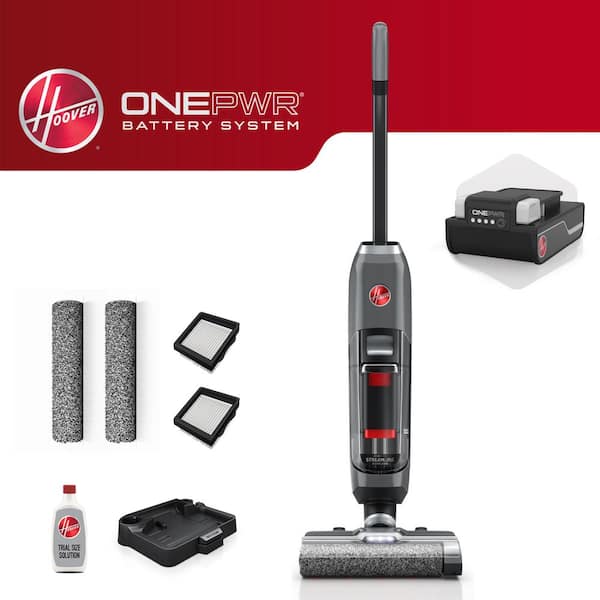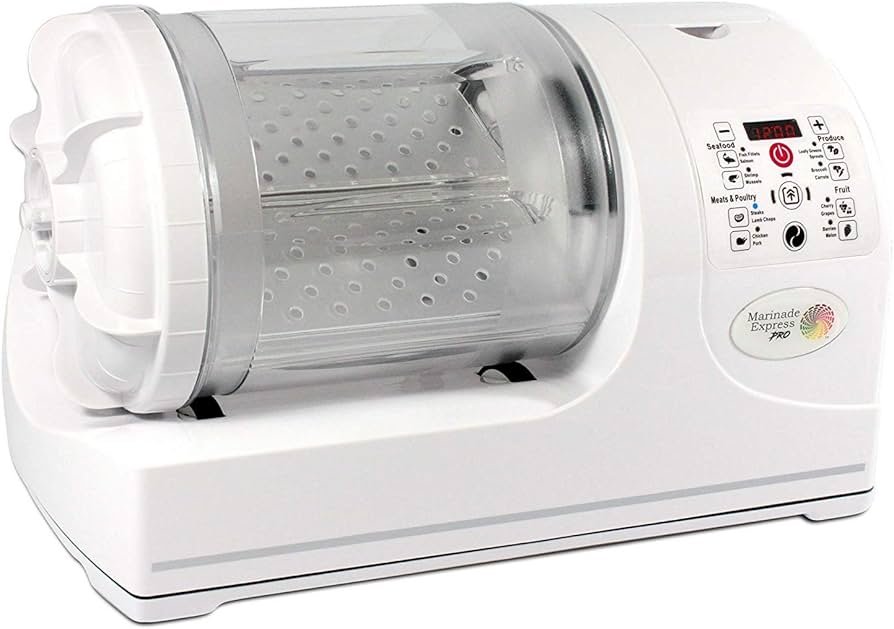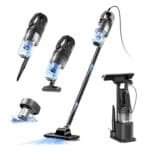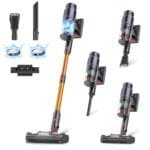Vacuum-sealed system technology keeps items fresh by removing air from packaging. This method extends shelf life and preserves quality.
Many industries use vacuum sealing. From food storage to medical supplies, its benefits are clear. This technology helps maintain freshness, prevents contamination, and saves space. Understanding how it works can offer insights into its wide applications. In this blog, we’ll explore the basics of vacuum-sealed systems.
You’ll learn how they function and why they are important. Whether you’re curious about storing food or protecting valuable items, this guide will provide valuable knowledge. Let’s dive into the world of vacuum-sealed system technology and discover its many uses.

Credit: www.additivemanufacturing.media
Introduction To Vacuum Sealed Systems
Vacuum sealed systems preserve food by removing air, which slows spoilage. This technology helps extend the freshness of stored items. It’s widely used for both household and commercial purposes.
Vacuum sealed systems are fascinating, aren’t they? These systems are used in many aspects of our daily lives, from food preservation to high-tech manufacturing. Understanding how vacuum sealed systems work can help you appreciate their benefits and perhaps even inspire you to use them in new ways.Definition And Basics
A vacuum sealed system removes air from a container to create a vacuum. This process involves using a pump or other device to extract air, creating an airtight environment.This airtight seal prevents the entry of oxygen, moisture, and other contaminants. This is particularly useful for preserving food, protecting sensitive electronics, or even in scientific research.By removing air, vacuum sealed systems help extend the shelf life of products. For instance, vacuum sealed food stays fresh longer because the absence of oxygen slows down the growth of bacteria and mold.Historical Background
The concept of vacuum sealing isn’t new. In fact, it dates back to ancient times. Early civilizations used rudimentary methods to create airtight containers for food storage.In the 1940s, vacuum sealing technology took a leap with the invention of industrial vacuum sealers. These machines were initially used in the food industry to preserve perishable items during transportation.Over time, the technology evolved. Today, vacuum sealed systems are used in various fields, including medicine, electronics, and even space exploration. Can you imagine how astronauts rely on vacuum sealed packaging to keep their food fresh during long missions?Understanding the basics and history of vacuum sealed systems can give you a new perspective on their importance. Have you ever used a vacuum sealer at home? If not, maybe it’s time to consider it!
Credit: www.amazon.com
Key Components
Vacuum sealed system technology relies on creating a tight seal to remove air. This process helps preserve freshness and extend shelf life. Key components include vacuum pumps, sealing materials, and airtight containers.
Understanding Vacuum Sealed System Technology involves getting to know its key components. These critical parts ensure the efficiency and reliability of the system. Let’s dive into the essential elements that make vacuum sealed systems work: the Vacuum Pump and the Sealing Mechanism.###Vacuum Pump
The vacuum pump is the heart of the vacuum sealed system. It creates the vacuum by removing air and gas from the sealed environment.Imagine you’re storing food in a vacuum-sealed bag. The pump extracts the air, preventing bacteria and mold from spoiling your food. This process extends the shelf life of your groceries significantly.Different types of vacuum pumps serve various purposes. For instance, a rotary vane pump is common in household food sealers. It’s efficient and relatively quiet, making it ideal for home use. On the other hand, industrial applications might require more robust pumps like the diaphragm pump, which can handle harsher conditions.###Sealing Mechanism
The sealing mechanism is what ensures the vacuum remains intact. It locks the vacuum within the bag or container, safeguarding the contents from external elements.Think about when you seal a bag of chips. If the seal isn’t perfect, the bag will leak air, causing the chips to go stale. A reliable sealing mechanism prevents such issues by creating a secure, airtight seal.Sealing mechanisms vary in complexity. Basic models use heat to melt the edges of a plastic bag together. More advanced systems might use clamping devices or adhesive seals for added security.Have you ever wondered why some vacuum seals last longer than others? It often comes down to the quality of the sealing mechanism. High-quality seals ensure that the vacuum remains unbroken, preserving the contents for extended periods.Do you think the vacuum sealing technology can make your life easier? Consider how these key components work to keep your food fresher and your valuable items protected.How Vacuum Sealing Works
Understanding how vacuum sealing works can help you make the most of this technology. Vacuum sealing is a method used to preserve food and other items by removing air from the packaging. This process extends the shelf life and maintains freshness. Let’s break down the steps and technology behind vacuum sealing.
Process Overview
Vacuum sealing involves placing items in a specially designed bag or container. A vacuum sealer machine then removes the air from the packaging. The machine uses suction to extract air, creating a tight seal. Once sealed, the items are protected from air exposure, moisture, and contaminants.
The process starts by placing the item in a bag. The open end of the bag is placed in the vacuum sealer. The machine then sucks the air out of the bag. After removing the air, the machine seals the bag tightly. The result is a vacuum-sealed package that keeps the contents fresh.
Technological Principles
Vacuum sealing relies on the principle of air removal. Air contains oxygen, which causes spoilage and decay. By removing air, the process slows down the deterioration. This keeps food and other items fresh longer.
The technology behind vacuum sealing includes a vacuum pump. The pump creates a vacuum by removing air. Sensors in the machine detect when the air is removed. Once the air is out, the machine seals the bag with heat. This creates an airtight seal that prevents air from entering.
Some vacuum sealers have additional features. For example, they may have modes for different types of food. These modes adjust the suction and sealing process to suit the item being sealed. This ensures optimal preservation for various foods and items.
Types Of Vacuum Sealed Systems
Vacuum sealed systems come in various types, such as chamber vacuum sealers and external vacuum sealers. Chamber vacuum sealers are ideal for preserving food and other items. External vacuum sealers are compact and perfect for smaller tasks.
Understanding vacuum sealed system technology can seem complex, but it becomes easier when you break it down into the types of systems available. Each type has unique features that cater to different needs. Let’s dive into the two main types of vacuum sealed systems: Chamber Vacuum Sealers and External Vacuum Sealers.Chamber Vacuum Sealers
Chamber vacuum sealers are powerful and versatile. They work by placing the entire bag inside the chamber, which then removes the air from the whole chamber, not just the bag. This method is highly effective for sealing liquids and moist foods.These sealers are often used in commercial kitchens due to their robust performance. They can handle heavy-duty sealing tasks, making them ideal for bulk processing. However, they are also available for home use if you frequently preserve large quantities of food.One of the most significant advantages is the ability to seal multiple bags at once. This can save you time, especially when you are preparing meals for the week or storing seasonal produce. Have you ever tried to seal a bag with soup or marinade with an external vacuum sealer? It can be messy, but chamber vacuum sealers handle it with ease.External Vacuum Sealers
External vacuum sealers are more common in households. They are generally more affordable and take up less space compared to chamber vacuum sealers. These sealers work by clamping onto the open end of the bag and sucking the air out.They are perfect for dry foods like nuts, grains, and snacks. If you’re looking to keep your pantry organized and your food fresh, an external vacuum sealer can be a great tool. They are also handy for sous-vide cooking, allowing you to seal and cook your food without hassle.One downside is they can struggle with sealing liquids, but you can freeze the liquid first to make the process easier. Have you ever noticed freezer burn on your frozen vegetables? External vacuum sealers can help prevent that by removing the air that causes freezer burn.Which type suits your needs best? Do you need the power and versatility of a chamber vacuum sealer, or the convenience and affordability of an external vacuum sealer? Understanding the differences can help you make an informed decision and keep your food fresher for longer.Applications In Various Industries
Vacuum sealed system technology finds applications in various industries, such as food preservation, pharmaceuticals, and electronics. This technology helps extend shelf life, protect sensitive components, and maintain product quality.
Vacuum sealed system technology has found its way into many industries, offering innovative solutions to various challenges. From keeping your food fresh to ensuring the safety of medical supplies, this technology is versatile and impactful. Let’s dive into some of its notable applications.Food Preservation
Vacuum sealed systems are game-changers in the food industry. By removing air, they prevent the growth of bacteria and mold. This keeps food fresh for a longer time.Imagine not having to worry about your leftovers spoiling quickly. It also means you can buy in bulk and store food without waste.Restaurants benefit, too. They use vacuum sealing to maintain the quality of their ingredients. This ensures customers always get fresh, tasty meals.Medical And Pharmaceutical
In the medical field, vacuum sealing is critical. It ensures that medical instruments are sterile. This prevents infections and guarantees patient safety.Pharmaceutical companies use this technology to protect medications. Vacuum sealing keeps drugs free from contamination and extends their shelf life.Consider how crucial it is during a pandemic. Properly sealed medical supplies can be the difference between life and death.Have you ever wondered about the integrity of the medicine you take? Vacuum sealing provides that assurance.Advantages Of Vacuum Sealed Systems
Vacuum sealed systems have become increasingly popular due to their numerous advantages. From efficiency and longevity to cost-effectiveness, these systems offer practical benefits that can significantly improve your everyday life. Let’s dive into some of these advantages.
Efficiency And Longevity
Vacuum sealed systems are highly efficient. They prevent air from entering the sealed environment, which in turn slows down the oxidation process. This means your food stays fresher for a longer period.
Using a vacuum sealed system also extends the lifespan of your storage items. My grandmother used to vacuum seal her homemade jams, and they stayed flavorful for months. The technology preserves nutrients and flavors, making it a perfect solution for food storage.
Have you ever noticed your regular containers getting stained or retaining odors? Vacuum sealed systems eliminate this problem. They protect your items from contamination, ensuring they remain in pristine condition.
Cost-effectiveness
Vacuum sealed systems can save you money in the long run. By extending the shelf life of your food, you reduce waste and the need for frequent grocery shopping. Imagine how much you could save by not throwing away spoiled food every week.
These systems are also durable, which means fewer replacements and repairs. Although the initial investment might seem high, the long-term savings are substantial. You won’t need to constantly buy new containers or deal with food spoilage.
Have you ever thought about how much money you spend on plastic wrap and ziplock bags? With a vacuum sealed system, you can significantly cut down on these recurring expenses. This is especially beneficial for large families or those who buy in bulk.
Incorporating vacuum sealed systems into your daily routine can lead to significant advantages in efficiency, longevity, and cost-effectiveness. Why not give it a try and see the difference for yourself?
Challenges And Limitations
Mastering vacuum sealed system technology presents challenges. Ensuring airtight seals can be difficult. Maintenance and operational costs may also be high.
Understanding the challenges and limitations of vacuum sealed system technology is crucial. It’s not just about the benefits but also about being prepared for potential hurdles. Let’s dive into some of the common issues you might face.Technical Constraints
One major challenge is the initial setup.Installing a vacuum sealed system requires precision and expertise. Improper setup can lead to inefficiencies and system failures.Another issue is the compatibility of materials. Not all materials work well under vacuum conditions. This can limit your options and affect the overall performance.Maintenance Requirements
Vacuum sealed systems demand regular maintenance.Neglecting this can result in decreased efficiency and system breakdowns. You need to keep an eye on the seals and replace them as needed.Contamination is another concern. Even a small particle can compromise the system. Regular cleaning is essential to maintain optimal performance.Have you faced any unexpected challenges with your vacuum sealed systems? It’s a reminder that even the best technologies come with their own set of difficulties.
Credit: www.homedepot.com
Future Trends
The future of vacuum sealed system technology looks bright. Advancements in this field continue to evolve rapidly. These trends have the potential to change how we store and preserve items. Let’s explore some key areas of growth and innovation.
Technological Innovations
New materials are being developed for vacuum sealing. These materials improve the efficiency and durability of the seals. There is also progress in automation. Machines are now smarter and more user-friendly. They can handle a variety of items with ease.
Another area of innovation is smart technology integration. Vacuum sealed systems can now connect to smart home devices. Users can control and monitor these systems remotely. This adds convenience and reliability to the process.
Market Growth
The market for vacuum sealed systems is expanding. More industries are finding value in this technology. Food and beverage companies use it to extend the shelf life of their products. Medical and pharmaceutical industries rely on it for safe packaging.
There is also growth in the consumer market. People are using vacuum sealed systems in their homes. They help in food storage, clothing preservation, and even travel packing. As awareness grows, demand is set to increase further.
Frequently Asked Questions
What Are The Basic Principles Of Vacuum Technology?
Vacuum technology involves creating low-pressure environments. Key principles include gas removal, pressure measurement, and maintaining vacuum integrity. Understanding molecular behavior is essential.
What Are The Fundamentals Of Vacuum Technology?
Vacuum technology involves creating, maintaining, and measuring low-pressure environments. Key components include vacuum pumps, gauges, and chambers. Understanding gas behavior, pressure ranges, and leak detection is crucial.
How Does The Vacuum System Work?
A vacuum system uses suction to remove dirt and debris. It creates a pressure difference, drawing air through a filter, trapping particles.
What Psi Is A Perfect Vacuum?
A perfect vacuum has a psi of 0. This means there is no pressure exerted in the vacuum.
Conclusion
Understanding vacuum sealed system technology is crucial for many industries. This technology helps preserve products longer. It also ensures better quality and freshness. Businesses can save money and reduce waste. Consumers benefit from longer-lasting goods. Vacuum sealing is simple yet effective.
It’s a smart choice for both businesses and households. Embracing this technology can lead to better product management. Stay informed and make the most of vacuum sealed systems. Your products and finances will thank you.





